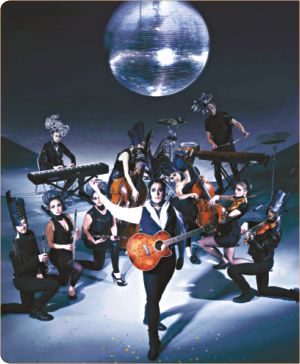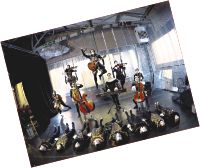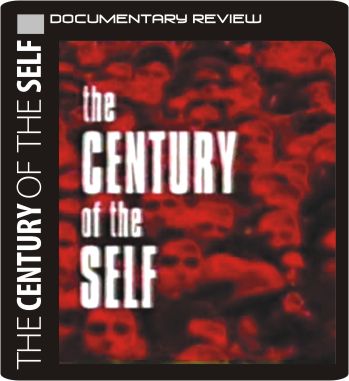HELO ZERO
By Shaer Reaz
 Master Chief in 2D. How awesome would be if you could play the world of Halo in a side scrolling 2D game? Thanks to some hardcore fans of Halo, now you can. Halo Zero is a fan-made game, developed with the blessings (but no direct involvement) of Bungie, the creators of the original Halo series.
Master Chief in 2D. How awesome would be if you could play the world of Halo in a side scrolling 2D game? Thanks to some hardcore fans of Halo, now you can. Halo Zero is a fan-made game, developed with the blessings (but no direct involvement) of Bungie, the creators of the original Halo series.
The game is set on Reach, fortress planet of the UNSC, at the beginning of the invasion by the Covenant, an alliance of alien races. They discover the location of the human Spartan base and this is where the story starts to come apart. You play as Master Chief, but no one has confirmed the Chief ever being on the surface of Reach during the Covenant invasion. People who have played the original Halo games and are familiar with the story will know what I'm talking about.
 The single player campaign consists of 10 pretty short but fun levels. In most side-scrollers, the action has more importance than the storyline, and this game is no different. The game allows Master Chief to point his weapons at any point on the screen, and almost all of the major weapons from the original Halo are faithfully reconstructed for use in 2D. As far as enemies go, you have the full range of Covenant units to battle against, from Grunts to Jackals to Elites. If you thought Hunters were fearsome in the original Halo games, you don't want to face them in a restrictive 2D environment.
The single player campaign consists of 10 pretty short but fun levels. In most side-scrollers, the action has more importance than the storyline, and this game is no different. The game allows Master Chief to point his weapons at any point on the screen, and almost all of the major weapons from the original Halo are faithfully reconstructed for use in 2D. As far as enemies go, you have the full range of Covenant units to battle against, from Grunts to Jackals to Elites. If you thought Hunters were fearsome in the original Halo games, you don't want to face them in a restrictive 2D environment.
The graphics are fine for a side scrolling game, the character movements and other effects rendered fluidly. The heads up display in the game mimics those of the original games. The vehicles are closely copied (you can drive Warthogs) and although you can't do much in them, they add to the genuineness of the game.
Gameplay wise it's not a very big challenge for those experienced at side scrolling games. Initially the controls might seem a bit disjointed, but you get used to them really quickly. One problem the developers didn't address was the progression in each level: usually side scrolling games have a control mechanism that prevents you from progressing in a level until you've successfully completed a task (in most games, you have to kill all enemies in an area to proceed). In Halo Zero, no such mechanism exists, meaning you can effectively keep running away from your enemies till you reach the end of the level (or in my case, the end of the game itself) without killing a single enemy. This shouldn't hamper the fun of people wanting to have fun playing the game.
Obviously you can't buy the game from anywhere, but there are several torrent sites that have it. The size of the game is laughably small, so Halo Zero will give you a good hour of fun without eating up any space on your hard disk. It's free, so why not give it a try?
 THE IRREPRESSIBLES
THE IRREPRESSIBLES
By Sarah Nafisa Shahid
Echoing with thunderous sounds and dramatising not only your ears but even your visuals as you listen to them, The Irrepressibles is an electro orchestral pop ensemble who have been playing for many years now with a constant agenda of non-conformism to mainstream music. Now don't fret when you read pop because they are not from the same genre where Justin Bieber comes from, this is art-pop and with all things 'artsy' these days, it's really hard to fully define what exactly they sound like, which is why I personally like them.
They originate from the UK and have been prone to much criticism (which slowly became mostly positive) during their initial years due their strange ways of expression which include a lot of play, theatrics, concept sets and music which could sound jazz-y in one moment and grunge rock-ish the next. The group is led by composer Jamie McDermott, whose energising vocals and brilliant composing compliments the ensemble's iconoclast ideas.
 Their debut album 'Mirror Mirror' astounded listeners with an emotional revival because the album was a piece of unique collaboration of violin, viola, bass, percussions, piano and cello delivering a haunting and mystical experience. All of their songs are full of passion and zeal - they talk about love, lust, anger and freedom. Be warned, the track 'In This Shirt' has the ability to give you creepy goosebumps and make you addicted to the song for a while. The piano works in their songs are so well arranged that it can satisfy devoted fans of Bach and Mozart who usually detest modern music.
Their debut album 'Mirror Mirror' astounded listeners with an emotional revival because the album was a piece of unique collaboration of violin, viola, bass, percussions, piano and cello delivering a haunting and mystical experience. All of their songs are full of passion and zeal - they talk about love, lust, anger and freedom. Be warned, the track 'In This Shirt' has the ability to give you creepy goosebumps and make you addicted to the song for a while. The piano works in their songs are so well arranged that it can satisfy devoted fans of Bach and Mozart who usually detest modern music.
There is nothing much that can be written about this orchestral collective for their unusual music is quite an ineffable encounter. If you're up for the sort of music which will stay with you for a really long time then give The Irrepressibles a try.
MUST HEAR TRACKS |
|
In this shirt |
Arrows |
Forget The Past |
The Tide |
|
Similar to The Irrepressibles: |
Even thought the 'Internet' claims that they are similar to David Bowie and Kate Bush, honestly, they are a unique ensemble and don't have much in common with contemporary artists. If you want something similar to their music, try putting some vocals to Bach's Prelude. Ok, don't.
But you get it. |

By Orin
For most of us, psychology starts and ends with Sigmund Freud. Sure, he founded psychoanalysis and said some pretty controversial things, but the deeper significance of his works isn't exactly common knowledge. His theories have influenced democratisation across the world and have been used to control the masses - Freud shaped our history in more ways than we can imagine. Propagandas by governments, advertisements by corporations, electoral campaigns all have their roots in Freud's theories, and that is what The Century of the Self documentary series by BBC tries to explain.
The series has four parts, each depicting different aspects of commercialisation, consumerism, politics and democracy. The first episode is called 'The Happiness Machine' which shows how one man transformed advertising as we know it, converting the participatory population into self-absorbent consumers. Freud's nephew Edward Bernays used Freud's theory of supremacy of the unconscious to fuel modern advertising, inventing terms like 'Public Relations' and 'Product Placement' that we so frequently use and basically turning business scenario around in the post-war United States.
The second part, 'The Engineering Constant' deals with applying Freudian logic to sell previously unheard of products like cake mixes to housewives, mongering fear and manipulating people's paranoia to market the 'suburban dream' to people. The third part 'There Is a Policeman Inside Our Heads and He Must Be Destroyed' lets us explore what happens without these control mechanisms introduced by corporations. When people are encouraged to let go of their innermost barbaric and violent self, the concept of 'me' triumphs that of an ideal society, as the 60's and 70's saw. Politicians have greatly benefited from the self-actualising 'me' society, as research and history shows that people are more influenced by their own self-interests than societal changes. Politicians like Margaret Thatcher, Bill Clinton and Tony Blair have used this fully to their advantages, as shown in the last segment, 'Eight People Sipping Wine in Kettering'.
The Century of the Self is not your run of the mill TV show; it is not even a traditional documentary. It cleverly uses fascinating archival images and visual wit to show us what the 20th century was all about. In that process it sometimes oversimplifies the turn of events and occasionally analyses things from a rather narrow point of view, but it manages to do what it set out to do. It opens your eyes with some jaw-dropping pieces of information, not letting you accept everything at their face value. The documentary is a brilliant work, which puts a big question mark on the liberalisation of the self in the 20th century. Certainly a must-watch.
MOVIE REVIEW

By Moyukh
 If you watched Memento and Following - two movies by Chris Nolan, and found them weird, then you probably have not heard the name of Béla Tarr. Hungarian by birth, Béla Tarr is one of the most artistic figures of modern cinema. His 2000 film Werckmeister Harmonies, based on the novel The Melancholy of Resistance by László Krasznahorkai, is a very surreal film to say the least. Set in the provincial town the film tells the story of a travelling circus which brings the stuffed carcass of a giant whale to the town.
If you watched Memento and Following - two movies by Chris Nolan, and found them weird, then you probably have not heard the name of Béla Tarr. Hungarian by birth, Béla Tarr is one of the most artistic figures of modern cinema. His 2000 film Werckmeister Harmonies, based on the novel The Melancholy of Resistance by László Krasznahorkai, is a very surreal film to say the least. Set in the provincial town the film tells the story of a travelling circus which brings the stuffed carcass of a giant whale to the town.
The characters are straight out of a Kafka novel, each weird and distinct in their own ways, trapped in the set motions of life. The quiet town is disturbed when the circus arrives, and in the town square a nameless, faceless crowd gathers waiting to see the whale and the Prince - an enigmatic, sinister figure to make a guest appearance.
One of the main characters János Valuska, is a quiet young man, interested in the whale. His employer György Eszter, is a lonely man, absorbed in his study of music. His theory of music refuting those of baroque musical theorist Andreas Werckmeister gives the movie its title. Living apart from his wife and engaged in his passionate pursuit of his art, Eszter sets the side story of the film.
As the circus arrives, the town is slowly set into a disruption of its usual affairs. The sinister Prince deformed circus freak, with his cult like following starts inciting his followers towards destruction of the town the town goes into a total breakdown of the normal affairs. In the midst of this, János tries to keep the affairs in order while still trying to not sink into despondency. With military intervention, influential personals take advantages of the situation, namely Eszter's vengeful wife, who takes over his house with the aide of the military.
János witnesses the destruction of a hospital by the mob, and scared he starts running away. The film ends with János in the hospital, traumatized and quiet while Eszter tries to console him and take him back into service.
The film is set in black and white, and this is perfect for the tone of the movie the subzero temperature of the town, the mournful eye of the dead whale and the harsh dreadful tone of the Prince's voice. The music throughout the movie is brilliant - perfectly complimenting the movie. While this movie may not be for everyone, readers of Kafka, and lovers of experimental cinema will love this movie. With very little speech, brilliant background music, awesome imagery and a film composed of only thirty nine shots in total, the film is a very good adaptation of the book - which has been described as a “comedy of the apocalypse.”
